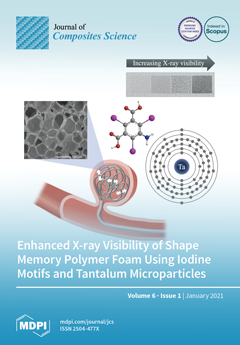The textile sector is one of the major culprits of water pollution, and demands immediate attention. The coloured textile effluent, loaded with toxic dyes, when mixed with waterbodies, may harm aquatic life, plants, animals, and humans. Although polyaniline in its different forms was
[...] Read more.
The textile sector is one of the major culprits of water pollution, and demands immediate attention. The coloured textile effluent, loaded with toxic dyes, when mixed with waterbodies, may harm aquatic life, plants, animals, and humans. Although polyaniline in its different forms was utilised for the adsorption of different dyes, the pure nano-fibrous form of polyaniline, i.e., PANI nanofibers, have reportedly not been used for the removal of dyes from wastewater. The present study aimed to employ nano-structured polyaniline, in the form of polyaniline nanofibers (base; PNB—polyaniline nanofiber base) for the elimination of methylene blue (cationic dye; MB) dye from its solution. The polyaniline nanofiber base (PNB) was synthesised by an interfacial polymerisation technique using ammonium persulphate as the oxidant and toluene as the organic solvent, and was characterised by FTIR, SEM, BET, HRTEM and XRD techniques. The HRTEM and SEM results showed that the average size of the synthesised polyaniline nanofiber base (PNB) was about 60 nm. BET revealed the enhanced surface area of polyaniline nanofiber base (PNB), i.e., 48 m
2g
−1 in comparison to that of conventionally synthesised polyaniline, which is only 14 m
2g
−1. The electric conductivity of the polyaniline nanofiber base (PNB) was reportedly lesser (2.3 × 10
−2 S/cm) than the salt form of the polyaniline, measured by four probe technique. The batch-wise adsorption of MB was conducted onto the polyaniline nanofiber base (PNB), and the influence of the preliminary dye concentration, duration of contact and polyaniline nanofiber base (PNB) dose, etc., were studied. The equilibrium values of these parameters are reported as 6 mg/L, 60 min and 2 g/L, respectively. The results revealed the 91% sorption of dye onto the polyaniline nanofiber base (PNB). The experimental data were best-fitted to Pseudo-second order (R
2 = 0.99) and followed Freundlich isotherm model (R
2 = 0.97). On desorption, about 86% of the absorbed dye was recovered and the regenerated adsorbent could be used efficiently for three more cycles.
Full article





